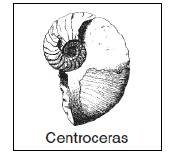

8(a) of strain ratio during drying was due to the small amount of axial shrinkage compared with radial deformation that leads in some cases to fissuring of sub-horizontal orientation which progressively came into view as observed in Fig.
In the diagram below the undisturbed series#
to the sedimentary nature of Lilla claystone, strain anisotropy was observed during Test Series 1, as shown in Fig. Previous results suggest a rela- tionship between the degradation of the rock stiffness and the progressive volumetric expansion of the rock. A similar response was observed in terms of shear modulus (Fig.

4E 0 : Then the degradation of Young's modulus exhibited a smaller rate. The larger reduction in Young's modulus took place during the first cycle, where it decreased to around 0. 11(a)) decreased during wetting phases but also along drying paths. Both Young's and shear moduli have been normalised against the stiffness in the initial state. 11 in terms of the number of RH cycles, N (0. The evolution of the rock stiffness is shown in Fig. 10 define the non-linear variation of E 0 and G 0 with water ratio at RH ¼ 99%. Initial values for E 0 ranged between 30 GPa and 35 GPa, whereas G 0 varied from 11 GPa to 15 GPa, with a peak value obtained for sample 50 mm_S1 (attributed to its high initial dry density). G 0, measured using bender elements, was periodically determined, but only in samples from Set 2. E 0, obtained from longitudinal wave measurements, was determined at the end of each hydraulic path. Figure 10 shows the variation of Young's modulus (E 0 ) and shear modulus (G 0 ) with water ratio during Test Series 1. The implications of this irreversible re- sponse will be analysed in the following sections. 3(d)), it is expected that the degradation path will follow the saturation line (e/e w ¼ 1) (e.g. However, in cases where liquid water is used (Test Series 4 Fig. The explanation is that new pore volumes (expressed by˜eby˜e 1, ˜e 2, ˜e 3 and˜eand˜e 4 ) were not filled with water when vapour was used during wetting paths. 9) reveals that the main consequence of the RH cycling was a progressive decrease of the global degree of saturation (S r ¼ e/e w ) at the end of each wetting path. Analysis of the evolution of void ratio with water ratio (e w ¼ wG s ) for sample 38 mm_S5 (see Fig. This is consistent with the orien- tation of samples which had the vertical axis perpendicular to bedding. 40ó t0, with a subse- quent smaller increase during first drying to 0. The first wetting reduced the tensile strength to around 0. Tensile strength has been normalised by the averaged tensile strength obtained in undisturbed samples A and B (ó t-peak /ó t0 ). Evolution of void ratio with water ratio for specimen 38 mm_S5 (Test Series 1) hydraulic paths contributed to the degradation of tensile strength shown in Fig. Peak tensile strength decreased with the application of RH cycles from around 2900 kPa (undisturbed) to 200 kPa (after four cycles). The steps observed in the stress-displacement curve for undisturbed Sample_B were a consequence of vertical displacement stops, of around 30 s, during which the shear wave velocity, orthogonal to the loading axis, was determined. The stress-displacement curves obtained during splitting tests showed a strong dependence on the previous RH cycling, as shown in Fig. 12 shows the temporal evolution of w and å v during RH cycling, which is similar to previously reported results (Fig. Again, up to four cycles were applied via vapour transfer (path A-I). effect of RH cycling on the tensile strength of Lilla claystone was determined by means of splitting (Brazilian) tests (Test Series 1 Ã Table 4).


 0 kommentar(er)
0 kommentar(er)
